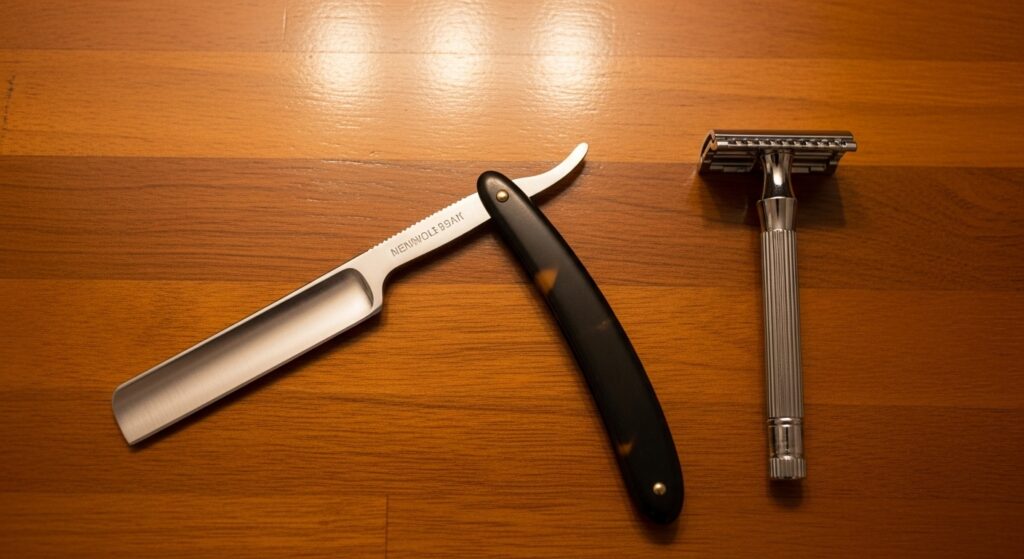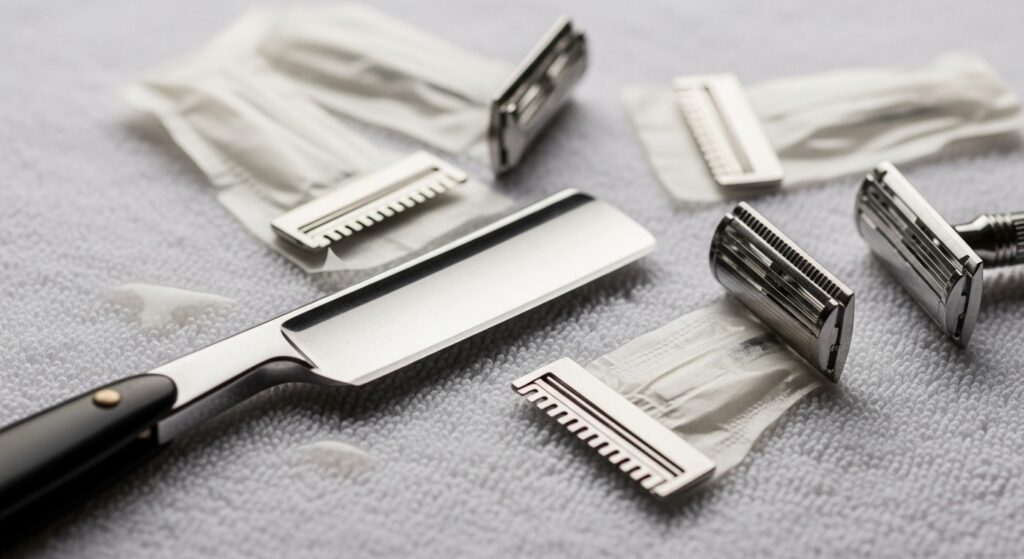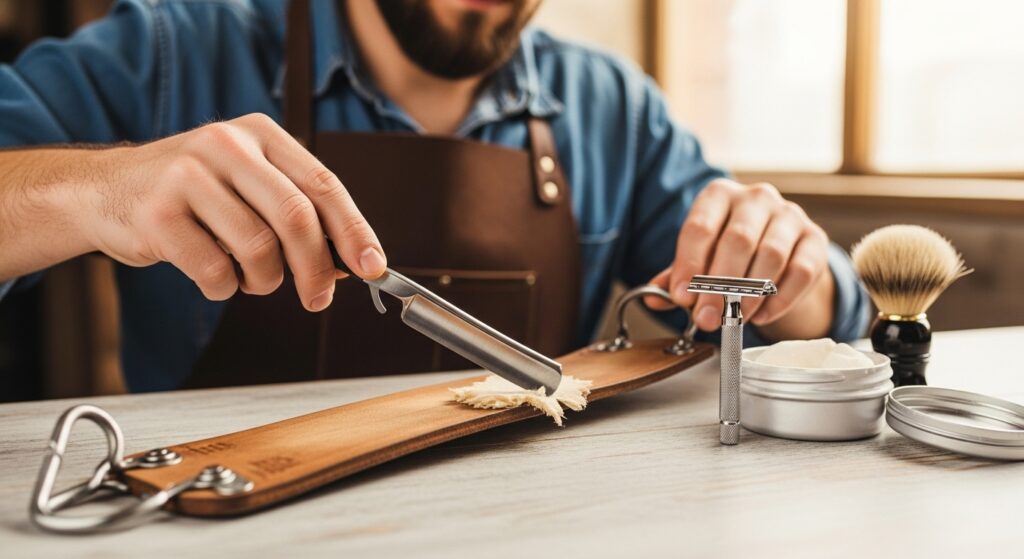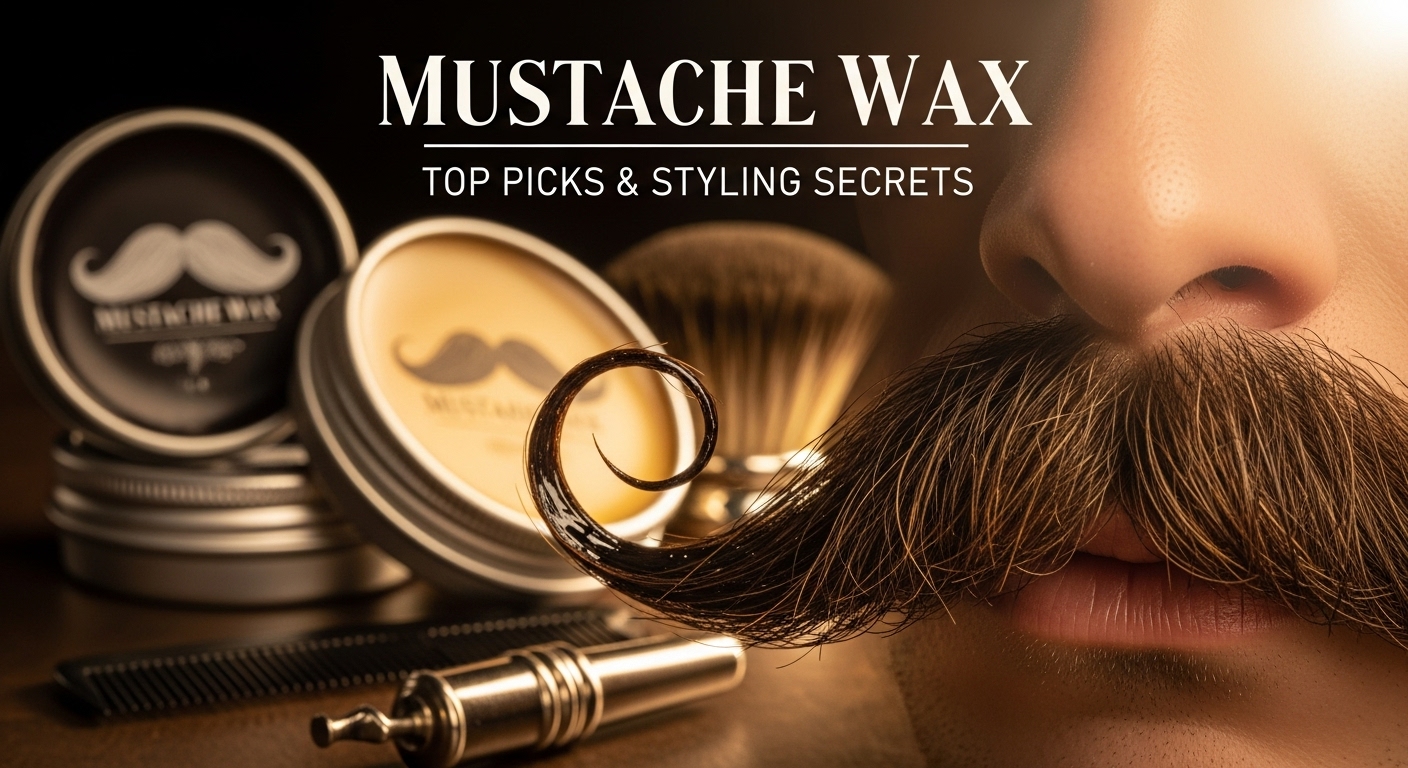Once we move to traditional wet shaving, the hair-splitting discussion between straight and safety razor has always been there. Several male characters would turn to the straight edge for its unrivaled closeness and vintage charisma, whereas some would stay with the safety razor for its simplicity and user-friendliness.
Not to mention how effective each one is in cutting the hair. Each instrument’s role in your morning routine, how it feels balanced in your hand, and how much time and care you are willing to give it are also important facets.

The Basics What You’re Actually Holding
Straight Edge Razor
The original one. Just to name a few, it can also be referred to as a cut throat razor, a straight blade razor, or a barber’s jargon of a shop razor. It’s made of a single folding steel part – the handle is where the steel goes in. No guards. No disposable parts (maybe except the blade). Many men now compare it to modern options like the best electric razor for men for convenience and ease of use.
Safety Razor
Features a protective guard that regulates blade exposure. Employs double-edge razor blades that are changed after a few shaves. Cuts less than the traditional way is the main benefit of the safety razor system which is also its marketing ground.

Shave Quality The Feel on Your Face
If you really want to feel the shaving sensation, then, the straight razor is the way to go. The only thing that separates the blade from your skin is the razor’s edge. Direct every pass. That is the reason why the closeness is achieved. But it also implies that the way you do things should be of utmost importance. If you over-tilt, over-press your blade, and over-exert, you will find out first-hand which one is the right way to go.
Safety razors? They are more forgiving. The guard determines the angle. You still have to use a light touch, but the learning curve is much softer. However, some people feel that in exchange for this, the razor shave is not as personal.
Learning Curve How Long Until You’re Good?
Straight Blade Razor
- First week: You will be very awkward and slow at it. You are likely to watch videos to learn and maybe cut yourself a bit.
- First month: much more smooth. You become familiar with the skin stretching and the controlling of angles.
- Long term: muscle memory works. It is possible to get a shave that cannot be compared with a cartridge.
Safety Razor
- First shave: the result was easy to reach just enough to call it decent.
- First week: you will feel comfortable and consistent.
- Long term: the nicks will be very few and only if you are not careful.
Cost Over Time
Here’s where things get interesting.
| Razor Type | Initial Cost | Ongoing Cost | Lifespan |
|---|---|---|---|
| Straight Razor | High upfront (blade, strop, hone) | Low (oil, occasional honing) | Decades if maintained |
| Safety Razor | Medium upfront | Medium (replacement blades) | Lifetime for handle, blades are disposable |
Maintenance and Care
If you use a straight razor blade, it is quite a task. Every time before you shave you will have to use the leather to sharpen the blade, once or twice a year you will have to take something called a honing stone to really sharpen the blade, after every use you will have to use some special oil to make your blade last longer. You will have to make sure you store it correctly. It is a whole other level of commitment.
Safety razors? People just rinse the head, swap the blade, and maybe polish the handle now and then. That is it.

Travel and Convenience
For airline travelers who take frequent flights, using a straight aerial edge razor is such a problem. It is not allowed on a plane whenever it is carried with you. It can only be put in the checked luggage. Plus, you will have to bring your strop and oil if your trip is long with you.
A safety razor is more travel-friendly. The blades are cheap and available almost everywhere. You do not have to put honing stones in your luggage.
Safety Which One is Riskier?
It really isn’t a competition. The safety razor is the one that won out in terms of safety. The guard is there to protect you. If you are careless with a straight razor, it will cut you—just like shaping a Van Dyke beard without the right technique.
Along with it being the reason why barbers train so much before they ever lay the hand on a customer’s face, it is the part which assures that they never harm the customer.
The Experience Why People Choose One Over the Other
Some people decide to go to the barber just to use a razor because they like the ritual. They enjoy the process of quitting the day, slowly doing it, heating the towel, stropping the blade. It sure feels like an event.
On the other hand, some people would rather do their business in a bathroom and not turn it into a mini barbershop. In other words, those people are the users of safety razors.
Which One Wins?
That is up to what matters to you the most.
- Want to toning possible make really close contact shaving was hardly just a mastery razor with the cut throat.
- On the other hand, want a fast, safe, and low-maintenance shaver? The safety razor will be you.
FAQs
1: Is a straight razor better than a safety razor for sensitive skin?
Not automatically. Both can be gentle if good technique is used. Safety razors are generally the first choice for beginners that have sensitive skin.
2: How long does it take to learn shaving with a straight razor?
Around one month to feel comfortable and a longer period to get the mastery.
3: Is it possible that I can use both a straight blade razor and a safety razor?
Indeed. Most people have both and pick one according to the time and mood.
4: Are straight razor blades sharper than safety razor blades?
They can be made very sharp, however, sharpness by itself is not the only deciding factor of the quality of the shave – technique is the main factor.
5: Do barbers still use straight razors?
Yes, however it seems that in certain areas the barbers are utilizing disposible razor blades, citing hygiene standards as the reason.

Roy Anderson brings a deep love for hair care and styling products, offering practical advice on keeping your hair in top shape every day. He reviews popular and underrated hair products to guide readers toward the best choices. Roy also shares home care routines to promote strong, healthy hair.




